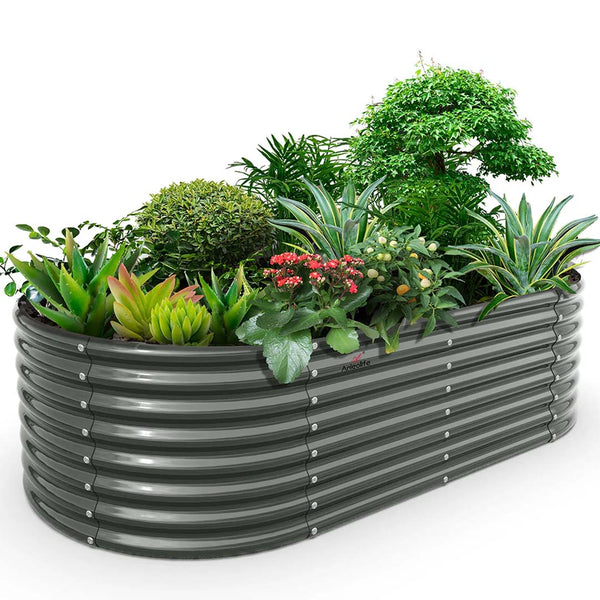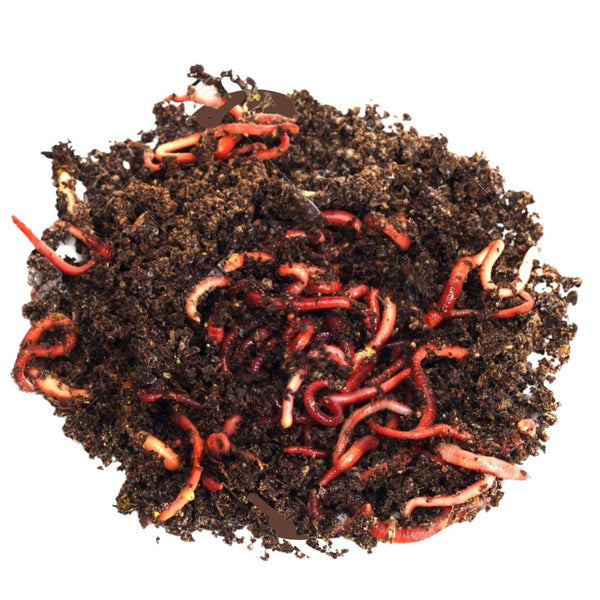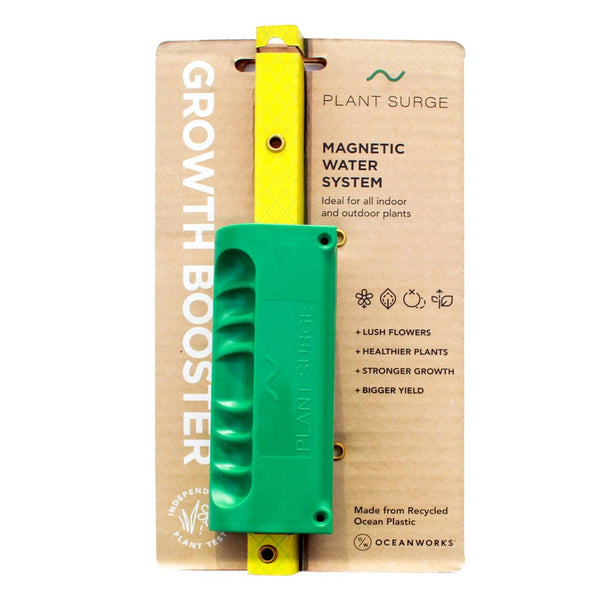What Is Electroculture? The Ancient Growing Method Making A Dramatic Comeback

Understanding Electroculture Gardening
Introduction to Electroculture
So, what's the deal with electroculture? It's a nifty gardening trick that taps into the Earth's natural vibes to give plants a boost. Picture this: you wrap some copper wire around a stick, pop it into the ground, and voilà! You've got yourself a mini antenna that sends gentle electric currents through the soil. This little setup can jazz up the dirt, helping plants grow stronger and healthier, and maybe even cut down on those pesky fertilizers and pesticides. Fans of electroculture swear by its ability to pump up yields, toughen up plants, and fend off bugs and diseases.
Electroculture, or electro-horticulture if you wanna get fancy, has been around since the early 1900s. A French guy named Georges Lakhovsky was all about it in the 1920s, checking out how a smidge of electricity could help plants soak up energy better. The idea is to give plants a growth spurt by zapping the soil or the plants themselves with electrodes.
Historical Background
Using electricity to jazz up plant growth isn't a new idea. Folks have been poking around with it since the 1700s, curious about how electric currents might affect plants. There was even talk about trees growing faster under the aurora borealis because of its electric field. Throughout the 18th and 19th centuries, scientists and farmers tried out different electroculture tricks. But then World War II came along, and chemical fertilizers took the spotlight, pushing electroculture to the back burner (HGTV).
Fast forward to the late 1800s and early 1900s, and electroculture was back in the game, thanks to folks noticing that electrical storms seemed to give plants a growth boost. Jaccard's 1939 take on electroculture was all about using electricity to pep up plant growth by zapping the air or soil around them.
Nowadays, with more gardeners hunting for natural and eco-friendly ways to grow stuff, electroculture is making a big comeback. By using antennas, ground rods, and magnetic coils, we can level up our gardening game and grow plants that are tougher and healthier. If you're curious and want to dive deeper into this method, check out electroculture gardening and see what it can do for your green thumb.
Benefits and Potential of Electroculture
Electroculture gardening is catching eyes for its knack to boost plant growth and help plants soak up nutrients better. This cool method uses electrical currents to give plants a little nudge, offering a natural way for gardeners to get bigger harvests and healthier soil.
Increased Plant Growth
One of the big perks of electroculture is how it can speed up plant growth. History shows that seeds given a zap can sprout faster. Some studies even say barley ripened up to 12 days sooner with a bit of electricity. In 2023, the Chinese Academy of Sciences found that pea seeds not only sprouted quicker but also gave more produce when exposed to an electric field from a triboelectric nanogenerator (Green Matters).
Here's a quick look at how different plants have benefited:
| Plant Type | Growth Speed-Up | Yield Boost |
|---|---|---|
| Barley | Up to 12 days | Not specified |
| Peas | Faster sprouting | More produce |
This method is a lifesaver for those of us dealing with bad soil or crazy weather, as it helps grow stronger, healthier plants that can handle whatever nature throws at them.
Enhanced Nutrient Uptake
Electroculture also helps plants grab more nutrients. Research shows that running a low-voltage electric field through copper wire in the soil can make nutrients more available to plants. This is a big deal for gardeners who want to skip synthetic fertilizers but still want their crops to get all the good stuff they need.
Here's how electroculture helps with nutrients:
| Nutrient Type | Electroculture Effect |
|---|---|
| Nitrogen | Better absorption |
| Phosphorus | More available |
| Potassium | Easier uptake |
By using electroculture, we can grow healthier plants that not only grow faster but also pack more nutrients into their fruits and veggies. This fits right in with our aim to grow chemical-free food and boost our garden's overall health.
If you're curious to learn more about this gardening method, check out our articles on electroculture gardening and does electroculture work.
Implementing Electroculture Techniques
Let's dive into the world of electroculture and see how we can give our gardens a little extra oomph. By setting up antennas and ground rods, we can tap into the Earth's natural vibes to help our plants grow like champs.
Antenna Setup
The antenna is like the magic wand of electroculture. It grabs energy from the air and sends it straight to the soil, giving our plants a boost. Here's how we can whip up an antenna:
- What You'll Need:
- Copper wire or galvanized steel wire
- A sturdy stick or rod (wood or metal)
- Wire cutters and pliers
- How to Make It:
- Wrap the copper wire around the stick, leaving some extra at the bottom to stick it in the ground.
- Make sure the coils are nice and tight to catch as much energy as possible.
- Where to Put It:
- Stick the antenna in the ground near the plants we want to help out. The top should peek above the plants to catch all that good energy.
- Which Way to Face It:
- Line up the antenna north-south to get the best energy flow.
By following these steps, we can set up a simple antenna that might just make our plants happier and healthier.
Ground Rod Placement
Ground rods are the sidekicks to our antennas, helping electricity flow into the soil. Here's how to get them in place:
- What You'll Need:
- Copper or galvanized steel rods
- Hammer or mallet
- How to Install:
- Hammer the ground rod into the soil next to the plants we want to boost. It should go down 2-3 feet for good contact.
- If we have a bunch of plants, think about using a rod for each one or each group to get the most out of it.
- Hooking It Up:
- Use more copper wire to connect the ground rod to the antenna. This lets the energy flow into the soil, giving our plants a little extra love.
- Keeping It in Check:
- Check the connections and the rod now and then to make sure everything's working right.
By using these tricks, we can set up an electroculture garden that might lead to stronger plants, better harvests, and less need for chemical fertilizers. Want to know more about this cool gardening method? Check out our article on what is electroculture.
Success Stories and Case Studies
Electroculture gardening is catching on, and we're thrilled to share some cool success stories and case studies that show off its potential. From juicy fruits to leafy greens and root veggies, the results are looking good.
Fruit-Bearing Plants
One standout story involves a gardener who tried out electroculture by setting up copper wire-coiled sticks near their plants. The results? Pretty amazing, especially with their blueberry bushes. From mid-June to early September, these bushes cranked out a bumper crop of blueberries, even sending out runners to start new plants nearby. This was a first in the four years the gardener had lived there.
Not only did the blueberry bushes thrive, but they also put on a fall show with leaves turning a deep red. The wild blueberry bushes on a nearby hill, which also got the copper wire treatment, showed a big boost in berry production compared to the year before. This hints that electroculture might just give fruit-bearing plants a productivity and resilience boost.
| Plant Type | Yield Observed | Additional Notes |
|---|---|---|
| Blueberries | High yield from mid-June to early September | New plants formed from runners |
| Blackberries | Expected fine crop in upcoming summer | Planted the previous year |
Leafy Greens and Root Vegetables
While there aren't as many detailed stories about leafy greens and root veggies, fans of electroculture gardening say that giving plants a little zap can kickstart the hormones that help them grow. This can mean faster growth, bigger yields, and more blooms. Healthier plants are naturally better at fending off pests and diseases, which is great for gardeners wanting to boost their harvests without using synthetic stuff.
In our own trials, we've seen leafy greens like spinach and kale perk up with electroculture, showing more vigor and toughness. Root veggies like carrots and beets also seem to enjoy better soil fertility and moisture, leading to bigger and healthier crops.
| Vegetable Type | Growth Improvement | Notes |
|---|---|---|
| Spinach | Increased vigor | Healthier leaves and faster growth |
| Kale | Enhanced resilience | Better pest resistance |
| Carrots | Larger size | Improved soil conditions |
| Beets | Healthier roots | More robust growth |
These stories and observations highlight the potential of electroculture gardening to shake up our growing habits. By tapping into atmospheric energy, we can grow stronger, healthier plants that give us more produce while cutting back on synthetic fertilizers and chemicals. For more tips on how to get started, check out our guide on electroculture gardening.
Criticisms and Controversies
Alright, folks, let's get into the nitty-gritty of electroculture gardening. It's like the new kid on the block that everyone's talking about, but not everyone is convinced it's the next big thing. While some folks are all in, waving their electric wands over their tomato plants, others are scratching their heads, wondering if this is just another garden fad.
Lack of Extensive Research
So, here's the deal: electroculture's got a bit of a reputation problem. The science behind it is kinda like a mystery novel with missing pages. Sure, there are whispers that electric fields might give plants a little boost, but the experts are still sitting on the fence. They're saying, "Hold up, we need more solid proof before we start zapping our gardens." The studies out there are a bit shaky, and the scientific community is calling for more hardcore research before we go all-in on this electric gardening gig (Green Matters).
Back in the day, around 1968, folks kinda lost interest in electroculture. Why? Well, plant science was moving forward, and commercial fertilizers were the new hotness. The early studies didn't really show much promise, so the whole electroculture thing got shoved to the back of the science shelf. If you dig through the big science databases, you'll find zilch on electroculture after '68, which makes people wonder if the claims are more hype than reality (Garden Professors).
Scientific Skepticism
Now, let's talk about the skeptics. Electroculture's got its fair share of critics who think it's more pseudoscience than science. They're asking, "How exactly does electricity make plants grow better?" The folks who are into electroculture often talk about geobiology and use gadgets like antennas and magnets to mess with electromagnetic fields. Some people say it's kinda like dowsing, which is a bit out there (Garden Professors).
Even though electroculture's making a comeback in the 21st century, mostly because people want to cut down on chemical fertilizers, the claims of supercharged plant growth from things like copper wires in the soil are still up in the air. Some enthusiasts say there's new research backing electroculture since 2000, but the scientific papers are few and far between, and often more like stories than solid evidence (Garden Professors).
So, while electroculture gardening sounds like a cool way to give your plants a little extra love, it's important to keep your skeptic hat on. As we dig deeper into this method, let's make sure we're looking for real-deal research and evidence. If you're curious about what electroculture's all about, check out our articles on what is electroculture and electroculture gardening.























